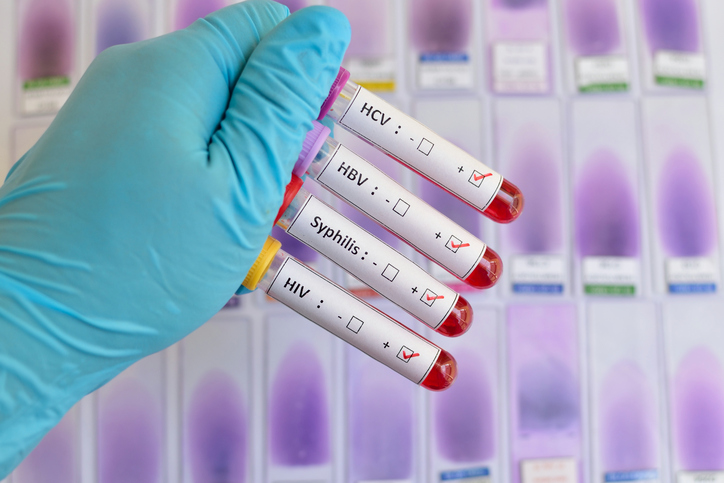Syphilis returns with a vengeance
An unexpected historic medical relic from the past is making a wide sweep across the U.S. catching health officials off guard. The sexually transmitted disease of syphilis is coming on strong with rates that have risen among both genders in every region across the nation since 2014. At one time, syphilis was a major public health threat causing serious long-term health problems such as arthritis, brain damage, and blindness.
Known as “The Great Imitator,” the insidious nature of syphilis is appearing to be striking with a vengeance as it leaves its mark on unsuspecting individuals. It is entirely possible to go through the early stages of syphilis without ever knowing it.
The rapid return of syphilis
Since the development of penicillin in 1928, a diagnosis of syphilis had become a rare occurrence in developed countries. Because syphilis is completely curable with penicillin, it was considered to have been all but eradicated as the rate of outbreaks of primary and secondary syphilis had dropped to 2.1 cases per 100,000 people which was the lowest rate since the U.S. had been keeping track of it beginning in 1941.
But starting in 2002, this downward trend began to reverse and has since shown no signs of slowing down. For example, between 2012 and 2014, the number of syphilis cases tripled in New Orleans; two years ago, central New York reported 27 cases but recently 110 new cases have developed; in Oregon, syphilis rates have increased by more than 1000 percent from 2007 to 2014 which has spawned a new website, syphaware.org.
What is syphilis?
Syphilis is caused by the bacterium Treponema pallidum and is transmitted from person to person by direct contact with a syphilitic sore known as a chancre. It is actually a curable disease but if not adequately treated, syphilis can cause serious health consequences.
Chancres can occur on or around the external genitals, in the vagina, around the anus, or in the rectum, or in or around the mouth. Transmission of syphilis can occur during vagina, anal, or oral sex. It cannot be spread by toilets seats, door knobs, swimming pools, hot tubs, bath tubs, shared clothing, or eating utensils.
Women who are pregnant with syphilis, called congenital syphilis, can spread it to their unborn baby causing abnormalities or death to the infant.
What are the symptoms?
The trouble todaywith diagnosing syphilis is to twofold – one, its symptoms can look like many other diseases, hence its nickname of “the great imitator,” and two, the radar of many doctors of today are not even considering syphilis as a possible condition some people may actually have resulting in delayed treatment for it.
From the time a person becomes infected with syphilis until the start of the first symptoms is 21 days but it can range from 10 to 90 days which also can make it hard to know when exactly a person is infected.
Syphilis typically follows a progression of stages that can last for weeks, months, or even years:
· Primary Stage
Marking the primary or first stage of syphilis is the appearance of either a single or multiple sores or chancre. The chancre will appear at the location where syphilis entered the body looking they firm, round, and will be painless. They can occur in the vagina or anus where they can be difficult to know they are there. The chancre lasts 3 to 6 weeks and will heal regardless if a person is treated or not. But if the infected person is not treated, then the infection progresses to the secondary stage.
· Secondary Stage
The second stage of symptoms starts with the development of skin rashes on one or more areas of the body and sores in the mouth, vagina, or anus. In addition to rashes and sores, other symptoms of this stage include swollen lymph glands, sore throat, patchy hair loss, headaches, weight loss, muscle aches, and fatigue. Again, these symptoms of the secondary phase will go away with or without treatment but if not treated, the infection will progress to the latent stage.
· Latent Stage
This is also known as the hidden stage of syphilis since there are no visible signs or symptoms. If the infected person was never treated, then they will continue to have syphilis in their body even though there are no symptoms present. Early latent syphilis is when the infection has occurred within the past 12 months. Late latent syphilis is when the infection occurred more than 12 months ago and it can last for years.
Even though syphilis is curable with penicillin, penicillin does not erase any damage the infection has already caused.
Why syphilis, why now?
At this time it is not completely understood the reason for the increases in syphilis. There are some reports from the CDC that may shine a light on some possible clues. One is that syphilis is not the only sexually transmitted disease on the rise – besides syphilis, chlamydia, and gonorrhea have also risen simultaneously for the first time on record.
Another concern that may be driving the increase in sexually transmitted diseases is technology. Apps such as Tinder and Grindr facilitate sex between partners who do not know the sexual history of who they are having sex with. As these kinds of apps become more popular, it is easier to meet partners without much information on them and then, they can be difficult to track down later if one of them is diagnosed with syphilis.
Until researchers and public health officials get a better handle on why syphilis and other STDs are on the increase, every one of us would be wise to always take careful precautions with any sexual partner or to abstain from sex until the complete sexual history is known of one another.



















